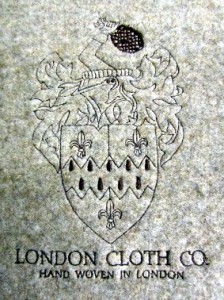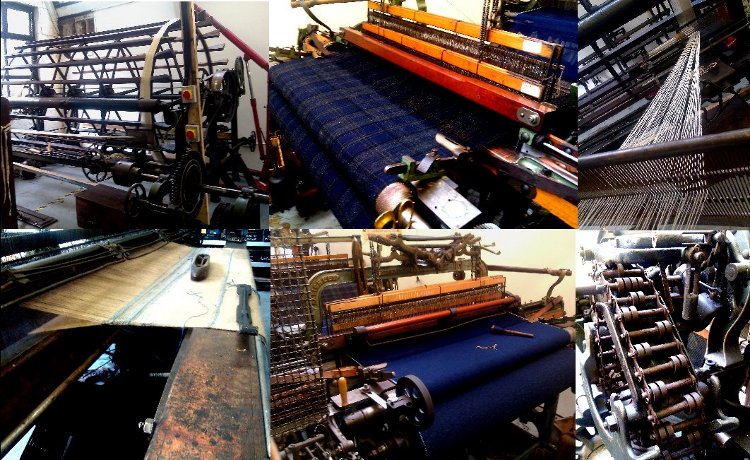 The story of London Cloth is a rather engaging one. It all boils down to a rather single minded fascination for looms, mechanical ones specifically.
The story of London Cloth is a rather engaging one. It all boils down to a rather single minded fascination for looms, mechanical ones specifically.
It indeed started off with a single loom acquired by Daniel Harris (no relations to Harris Tweets, other then the common interest in weaving). He acquired an old loom and brought it – taken apart into pieces – to London. That was in late October 2011. By December he had managed not only to reassemble the loom – and find spares for the missing pieces – but had actually managed to weave a not very wide, about 15m long and rather holey piece of cloth.
4 hard and laborious month later the cloth finally looked as it ought to look: perfect enough to send it off to finishing.
Nearly 2 years on, Daniel calls himself now a weaver, and is the owner of a small machine park of mechanical and power looms, weaving as much as 30m of fabric a day for brands such as Ben Sherman. It’s more: London Cloth prices are such that making the cloth in London is financially feasible for British Brands. Traceability of the making is not an issue (feel free to pop over to the Clapton weaving shed), and that of material – particularly wool – would keep a conversation going all night.
Short Documentary: The London Cloth Company – Keeping with Traditions
The machinery – beyond the looms but including a bobbin winder and a warping mill – are still ‘vintage’: reclaimed and dating from as early as 1850.
And like the first loom Daniel reassembled, they still stem from disused weaving sheds all over the UK, and have journeyed a good number of miles to London. Usually it bits and pieces. And usually thereafter hand-assembled again before turning them over to productive operations.
More recently London Cloth has started to collaborate with a couple of breeders of rare breed sheep flocks. The reasons are pretty much identical as those I have laid out in the post about the resurgence of mini spinning mills: breeders that incur losses by bring their wool through the Wool Marketing Board (WMB) to market; the huge quantities that the WMB sells at once (batches of metric tons, at auctions); and subsequently the disregard of wool in the eyes of breeders who see it as a liability rather than as a valuable good.
In a sense – the only other mill I know of that has got a somewhat similar ‘woolly’ idea about wool are the Isle of Mull weavers at Ardanalish.
This all be told, given how even established brands look for outlets that can produce small quantities (fabric, garments), and the increasingly more customised demands people have (not the least thanks to modern technology), London Cloth is onto something. Not necessarily because they produce with vintage looms – that alone is a brilliant idea from a number of angles: historically, culturally but also in terms of resource usage – but because they fill a gap that exists in the UK (and European) market: We either do one offs, or proper mass production. Anything else falls between cracks, meaning: there is demand but hardly anyone to meet it.
There is little doubt that we will hear more of London Cloth in the years to come.


